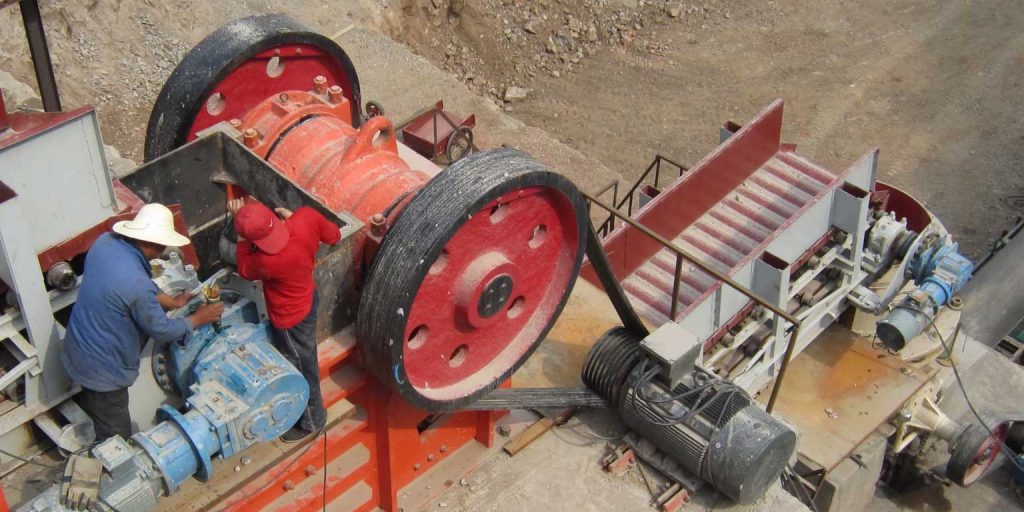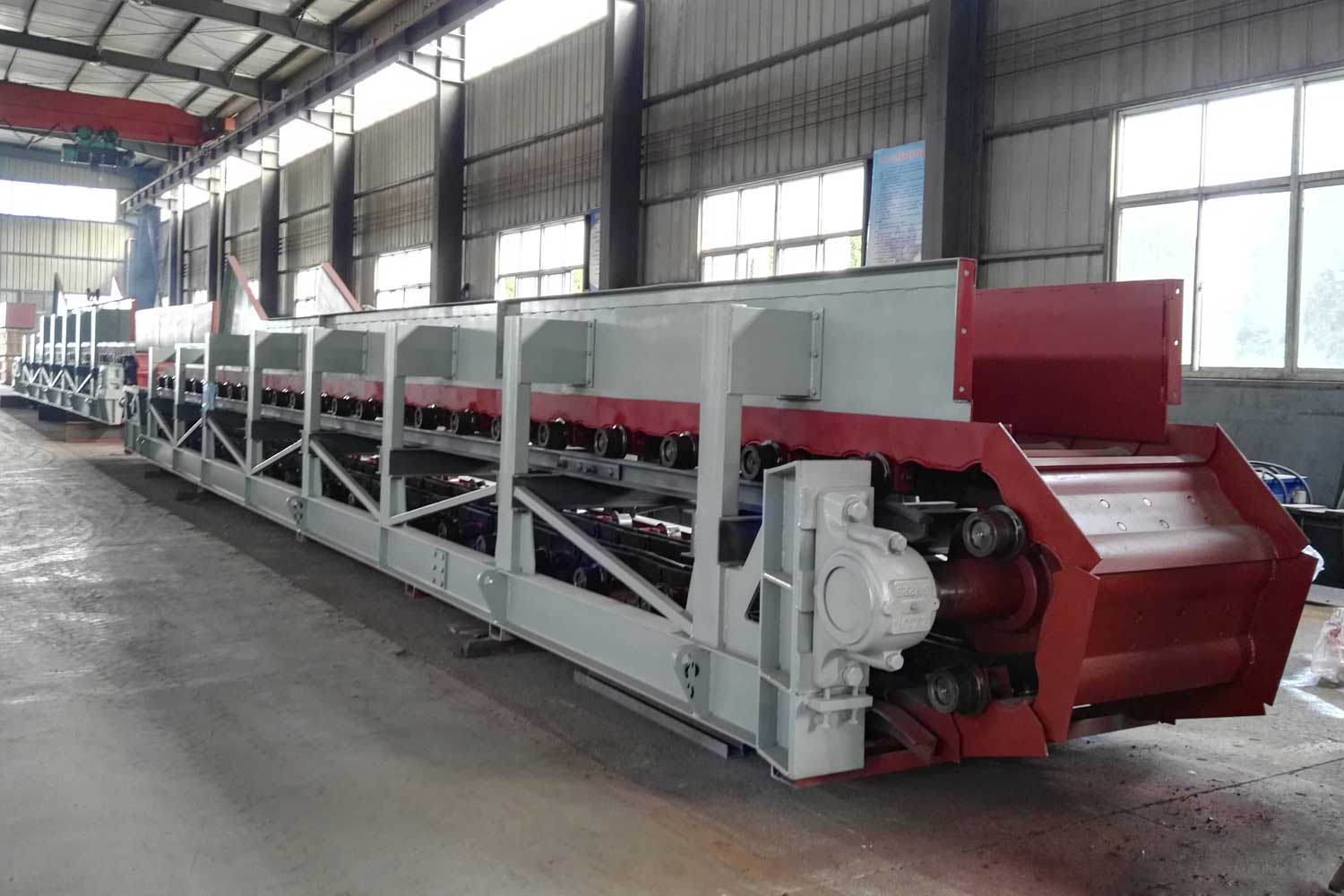An apron feeder is a type of conveyor system that is commonly used in mining operations and other heavy-duty industries to transfer heavy materials from one location to another. It is also known as a plate feeder, and it gets its name from the large, heavy-duty steel plates or “aprons” that are used to carry the material. In this article, we will discuss the working principle of an apron feeder, its components, and its various applications.

Characteristics 1#: Working Principle of an Apron Feeder
The apron feeder consists of a series of overlapping steel plates or “aprons” that are mounted on a chain-driven conveyor. The aprons are designed to overlap each other to prevent any spillage of material between them. The material to be transported is loaded onto the feeder at the tail end and is carried along the conveyor by the aprons.
The chain-driven conveyor moves the aprons along the length of the feeder. As the aprons move along the conveyor, they drag the material with them. The material is discharged from the feeder at the head end, where it falls onto another conveyor or storage bin.
The speed of the apron feeder can be controlled by adjusting the speed of the chain-driven conveyor. This allows for precise control over the flow of material, which is particularly important in applications where a consistent flow rate is required.
Characteristics 2#: Five Components of an Apron Feeder
- Aprons – The steel plates that carry the material along the feeder.
- Chain – The chain that drives the conveyor and moves the aprons along the length of the feeder.
- Rollers – The rollers that guide the chain along the length of the feeder.
- Sprockets – The sprockets that connect the chain to the conveyor and provide power to the system.
- Drive unit – The motor and gearbox that power the conveyor and control the speed of the apron feeder.
Characteristics 3#: Top Four Applications of an Apron Feeder
- Mining – Apron feeders are commonly used in mining operations to transport heavy materials such as ore, coal, and limestone. They are particularly useful in applications where the material needs to be moved over long distances or up steep inclines.
- Cement – Apron feeders are also used in the cement industry to transport clinker, which is the raw material used to make cement. The apron feeder is ideal for this application because it can handle large volumes of material and can be operated at a consistent flow rate.
- Quarrying – Apron feeders are used in quarrying operations to transport large rocks and other heavy materials. They are particularly useful in applications where the material needs to be transported over rough terrain.
- Power generation – Apron feeders are used in power generation facilities to transport coal and other materials. They are particularly useful in applications where the material needs to be moved over long distances or up steep inclines.
Characteristics 4#: Five Major Advantages of an Apron Feeder
- Versatility – Apron feeders can be used to transport a wide variety of materials, including heavy and abrasive materials.
- High capacity – Apron feeders are capable of handling large volumes of material, making them ideal for high-capacity applications.
- Precise control – The speed of the apron feeder can be controlled, allowing for precise control over the flow of material.
- Low maintenance – Apron feeders are designed to be low maintenance and can be operated for long periods of time without the need for frequent maintenance.
- Durability – Apron feeders are constructed from heavy-duty materials and are designed to withstand the rigors of heavy-duty applications.
Characteristics 5#: Four Major Disadvantages of an Apron Feeder
- High initial cost – Apron feeders can be expensive to purchase and install, particularly in applications where a large feeder is required.
- Maintenance – Although apron feeders are generally low maintenance, they can be more complex to maintain than other types of feeders. This is because of their many components, which can require regular inspection and replacement.
- Noise – Apron feeders can be noisy during operation, which can be a concern in certain applications.
- Limited flexibility – Apron feeders are not as flexible as other types of feeders because they are designed to transport materials in a straight line. This can be a disadvantage in applications where the material needs to be transported around corners or over rough terrain.
An apron feeder is a heavy-duty conveyor system that is commonly used in mining, cement, quarrying, and power generation applications. It consists of a series of overlapping steel plates or “aprons” that are mounted on a chain-driven conveyor. The aprons are designed to carry heavy materials and can be controlled to provide a precise flow rate. While apron feeders have many advantages, including high capacity and durability, they can be expensive to purchase and maintain and can be noisy during operation.
